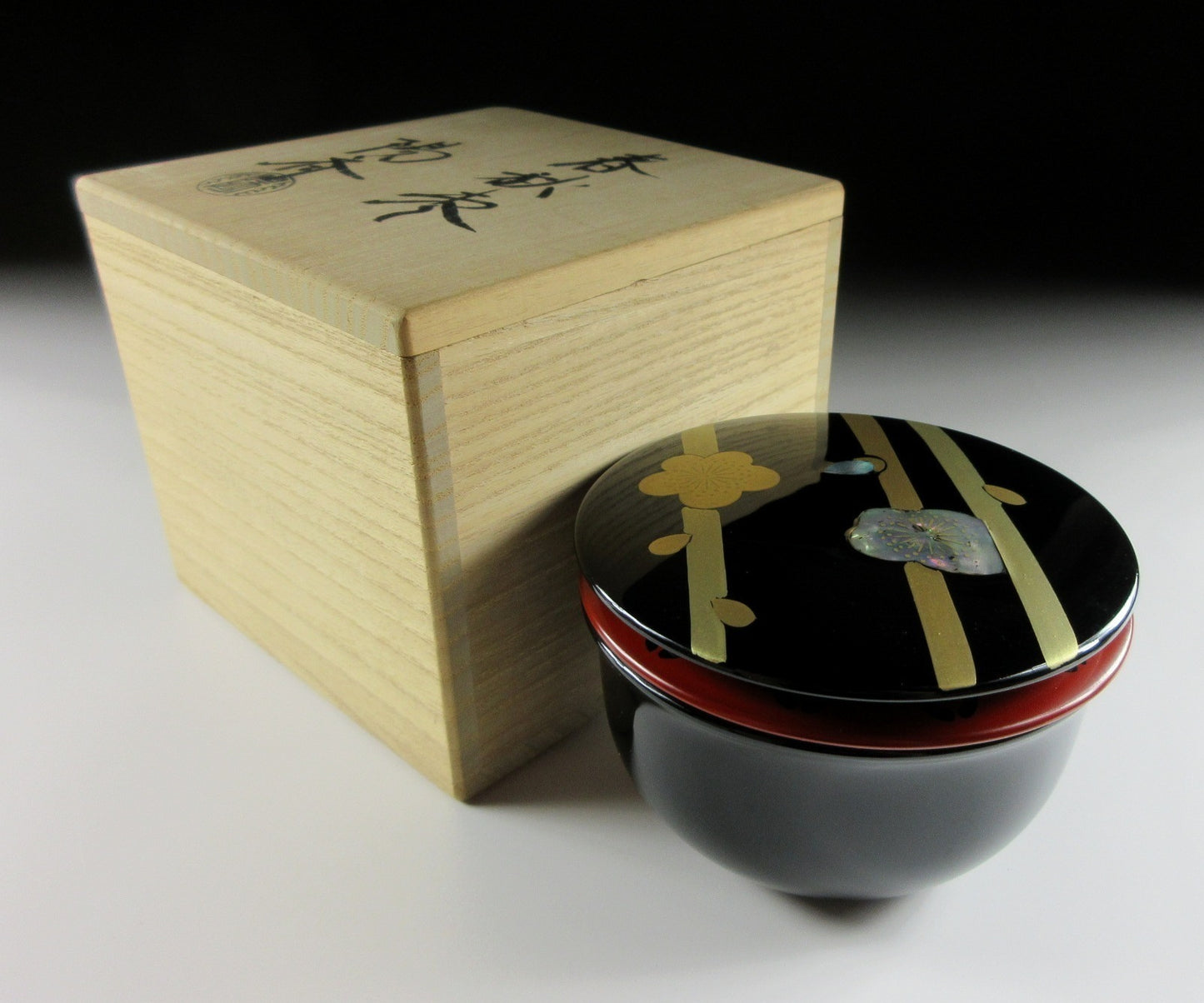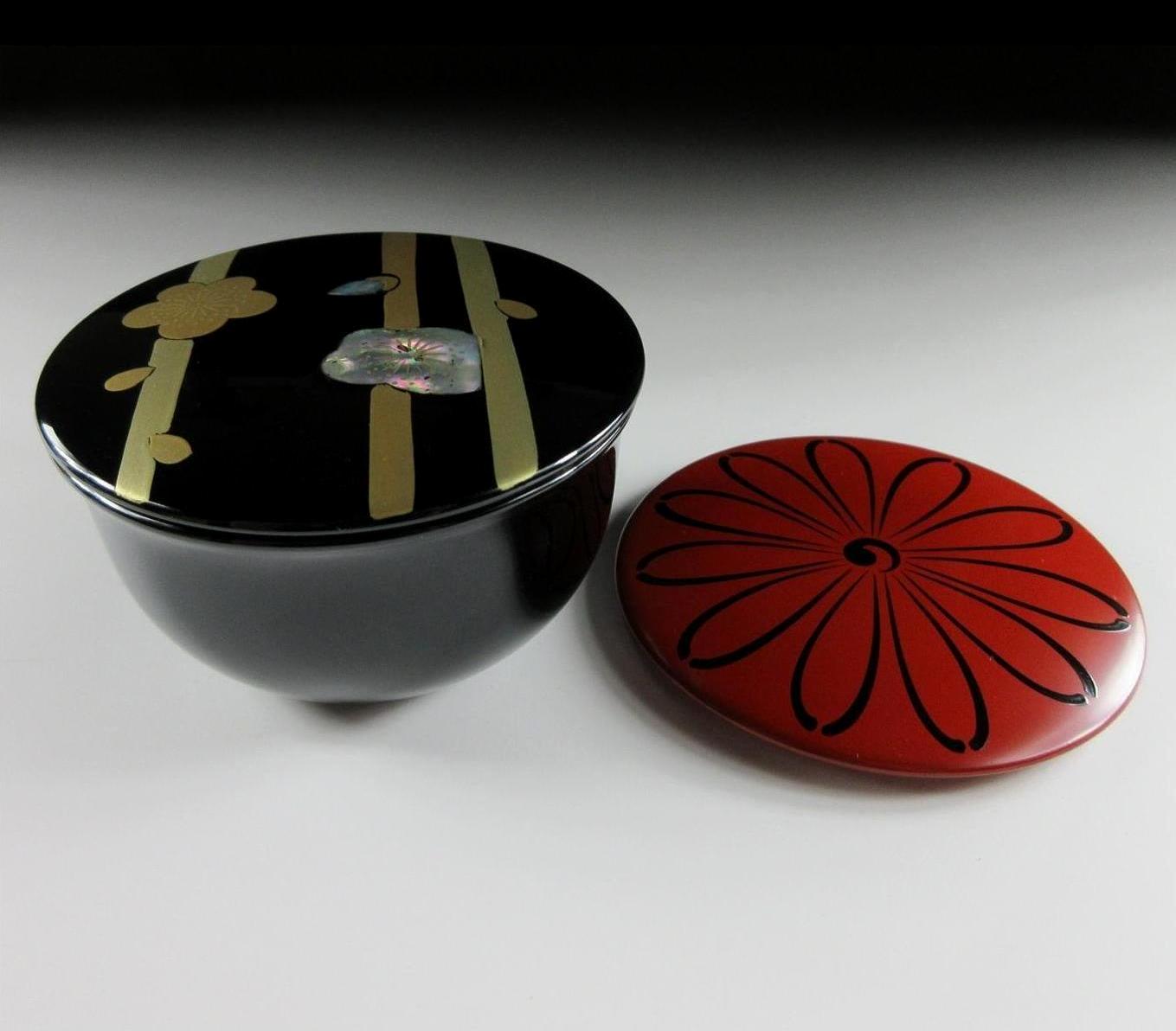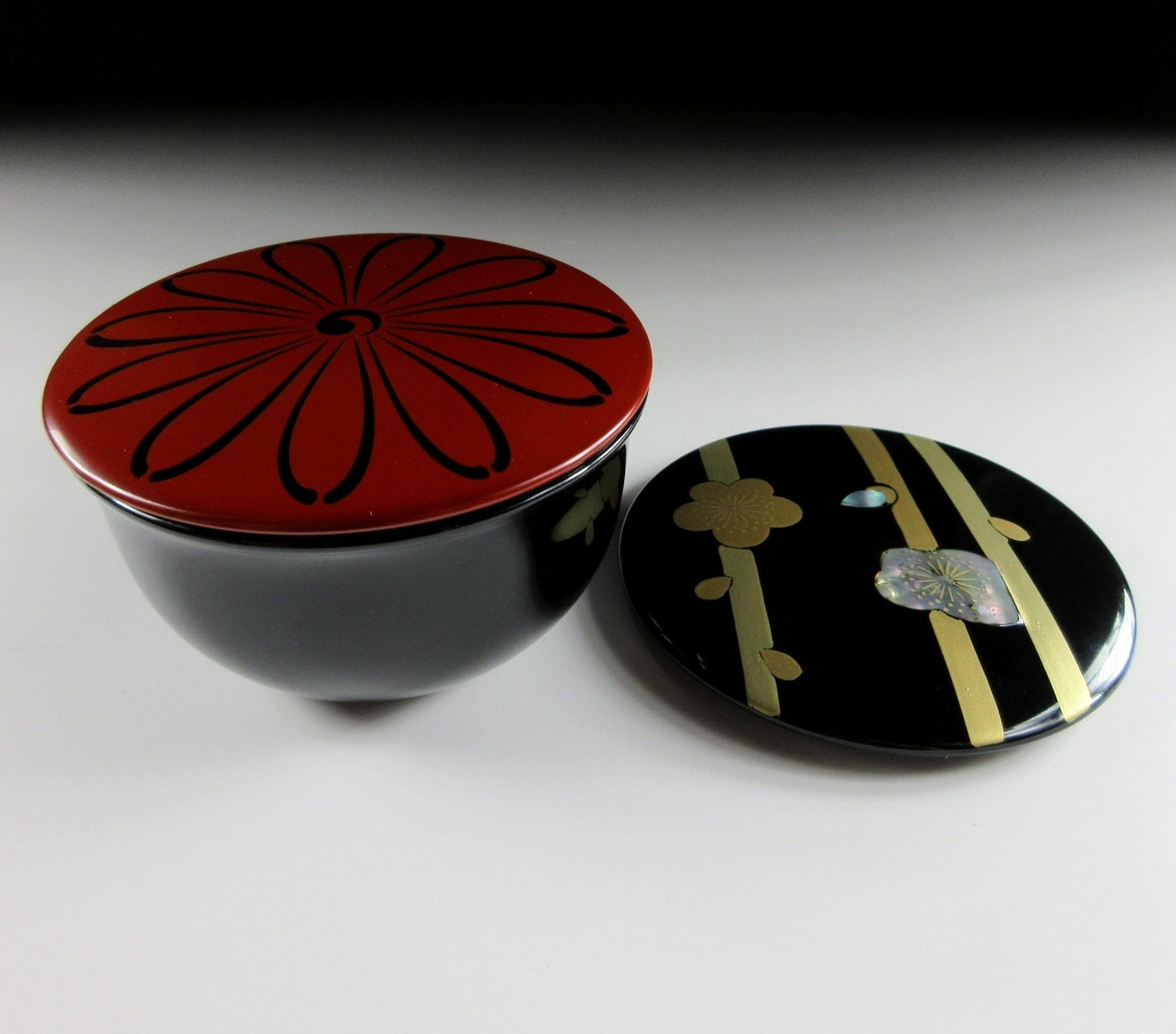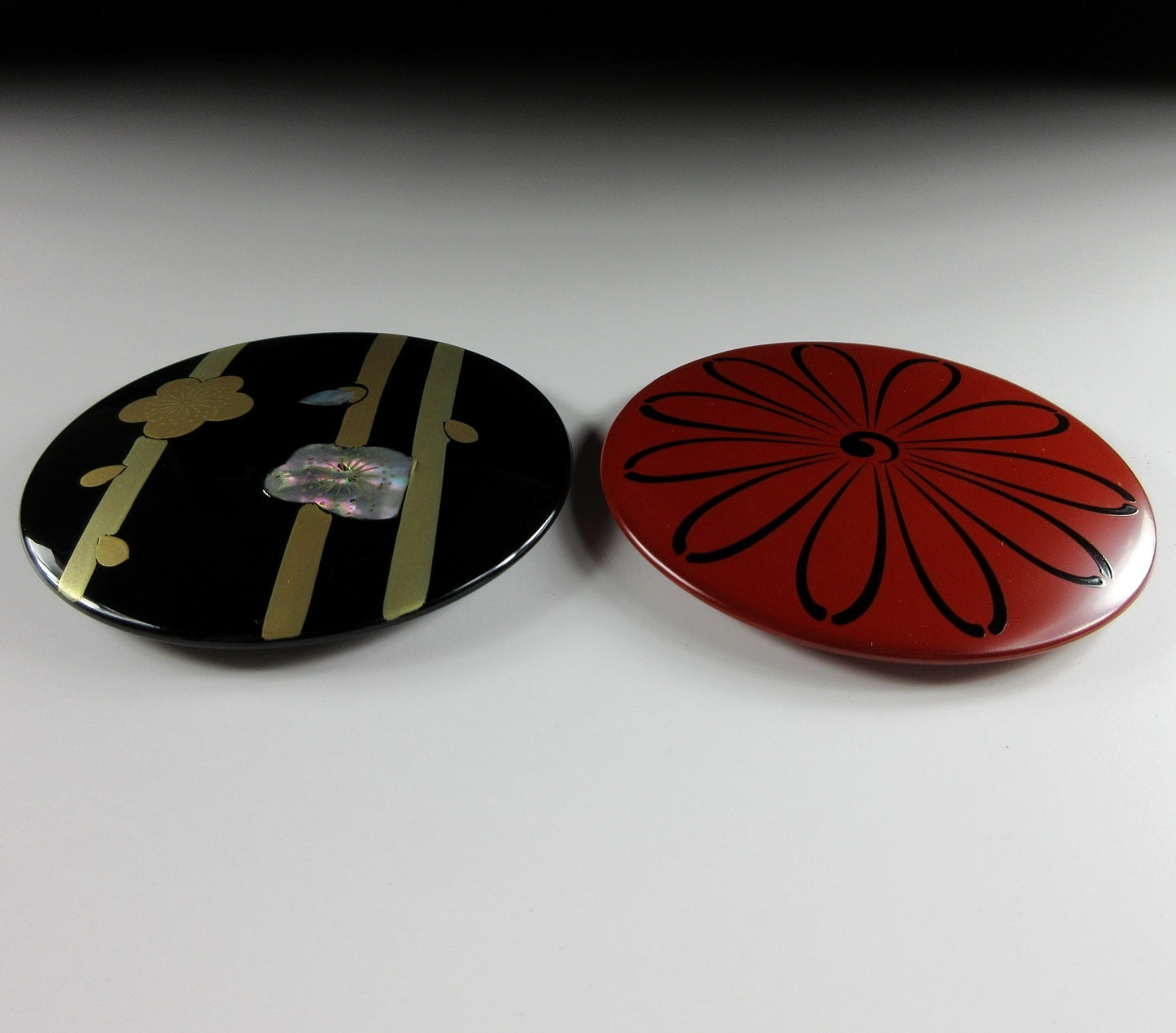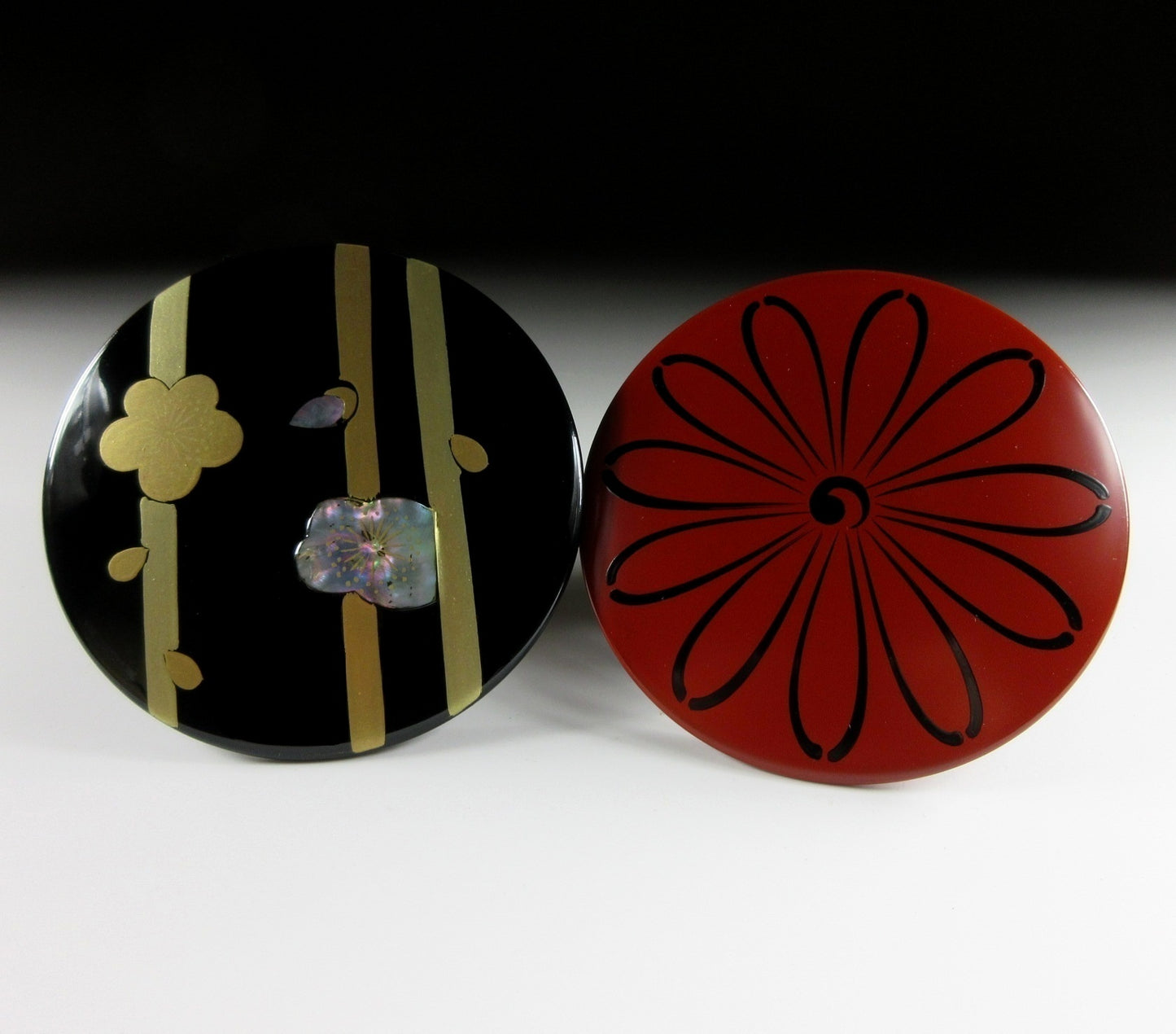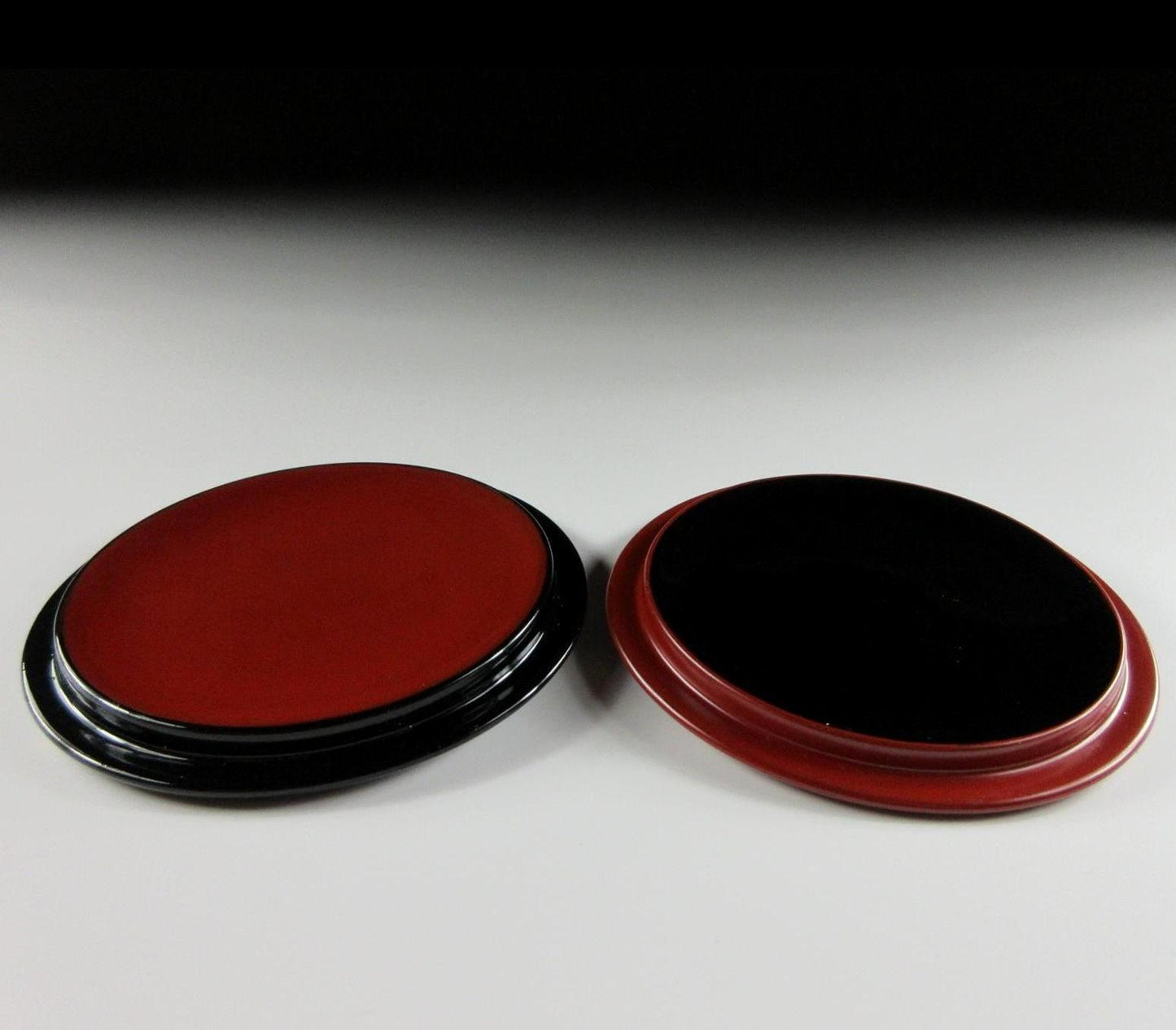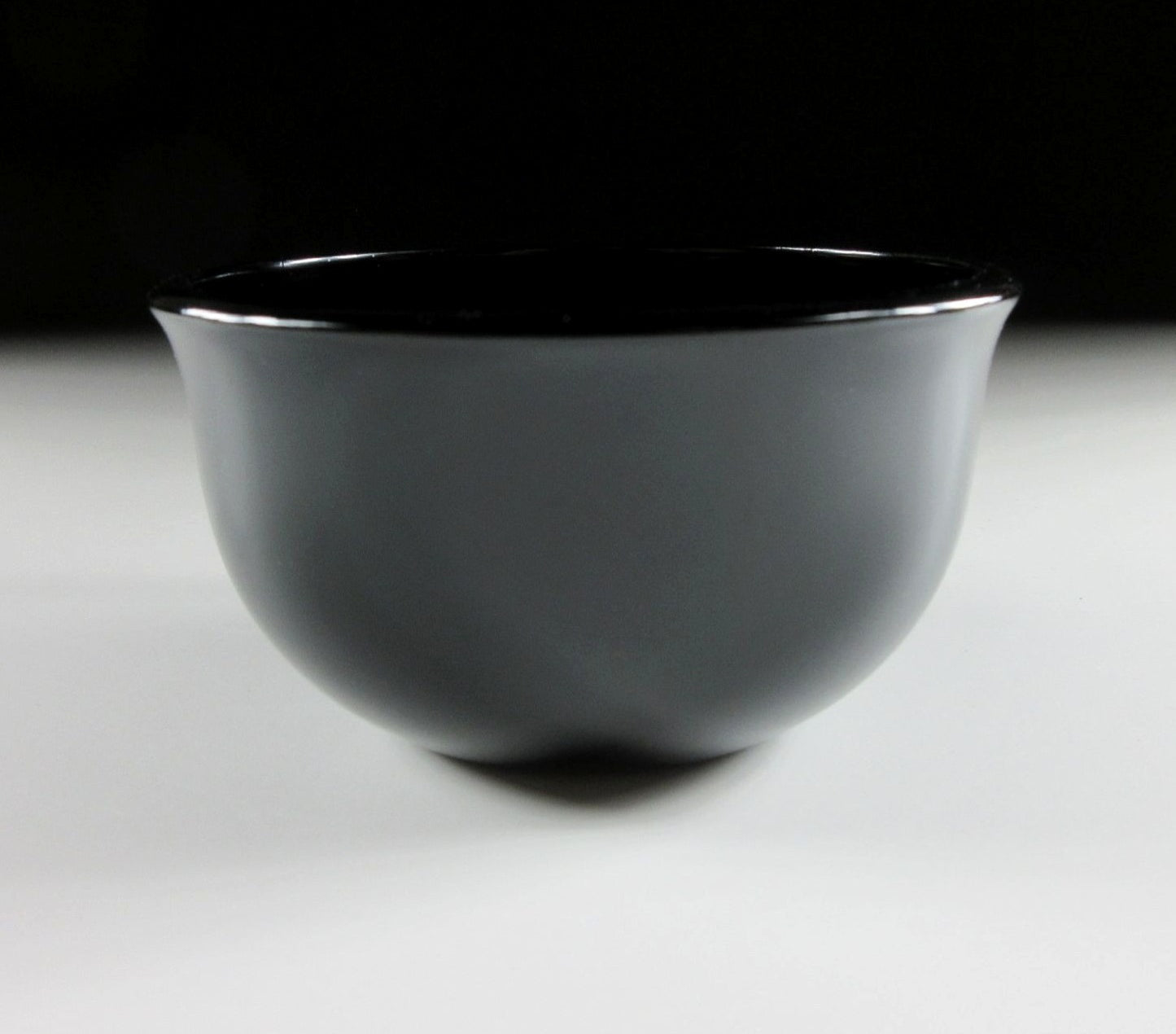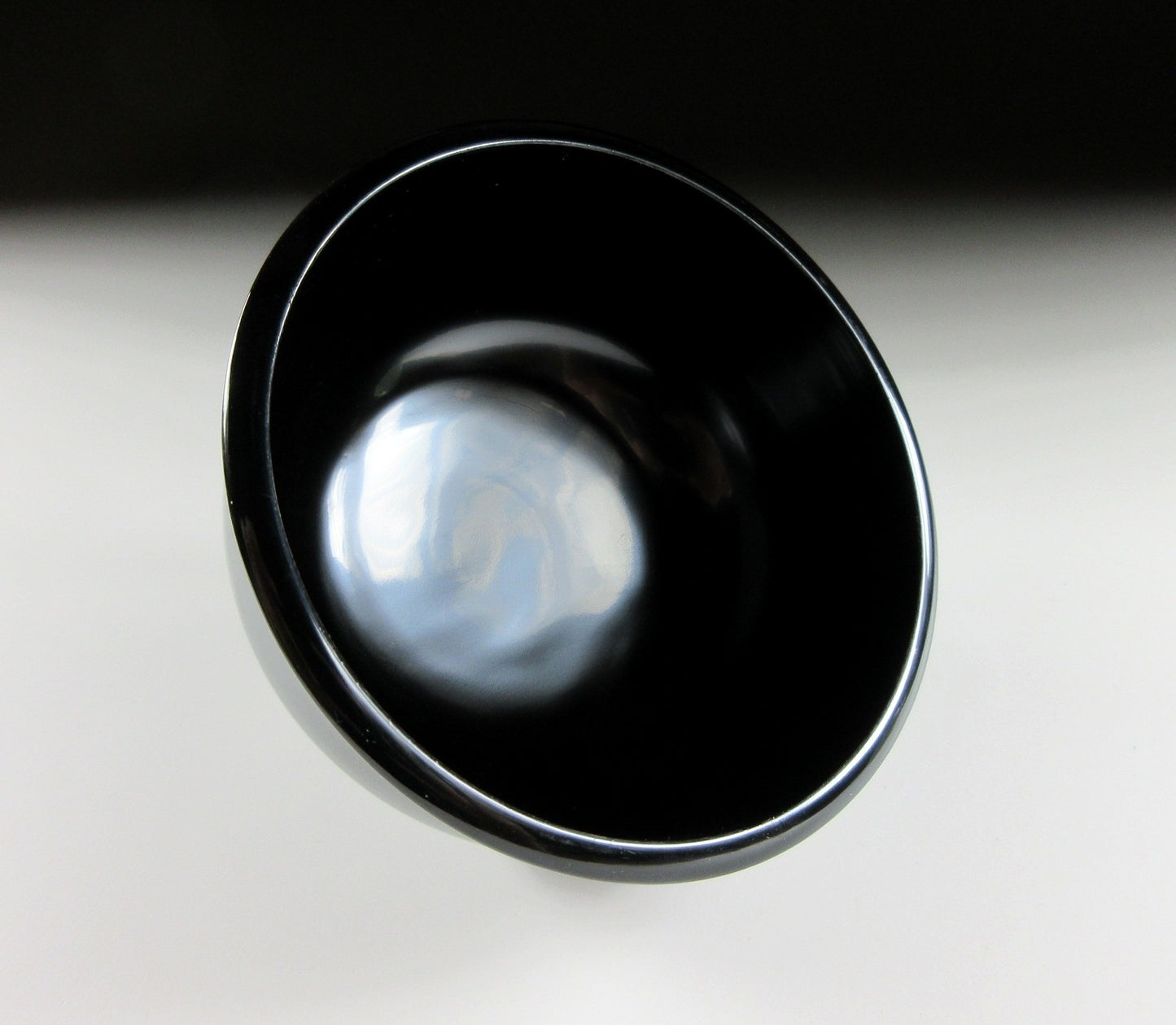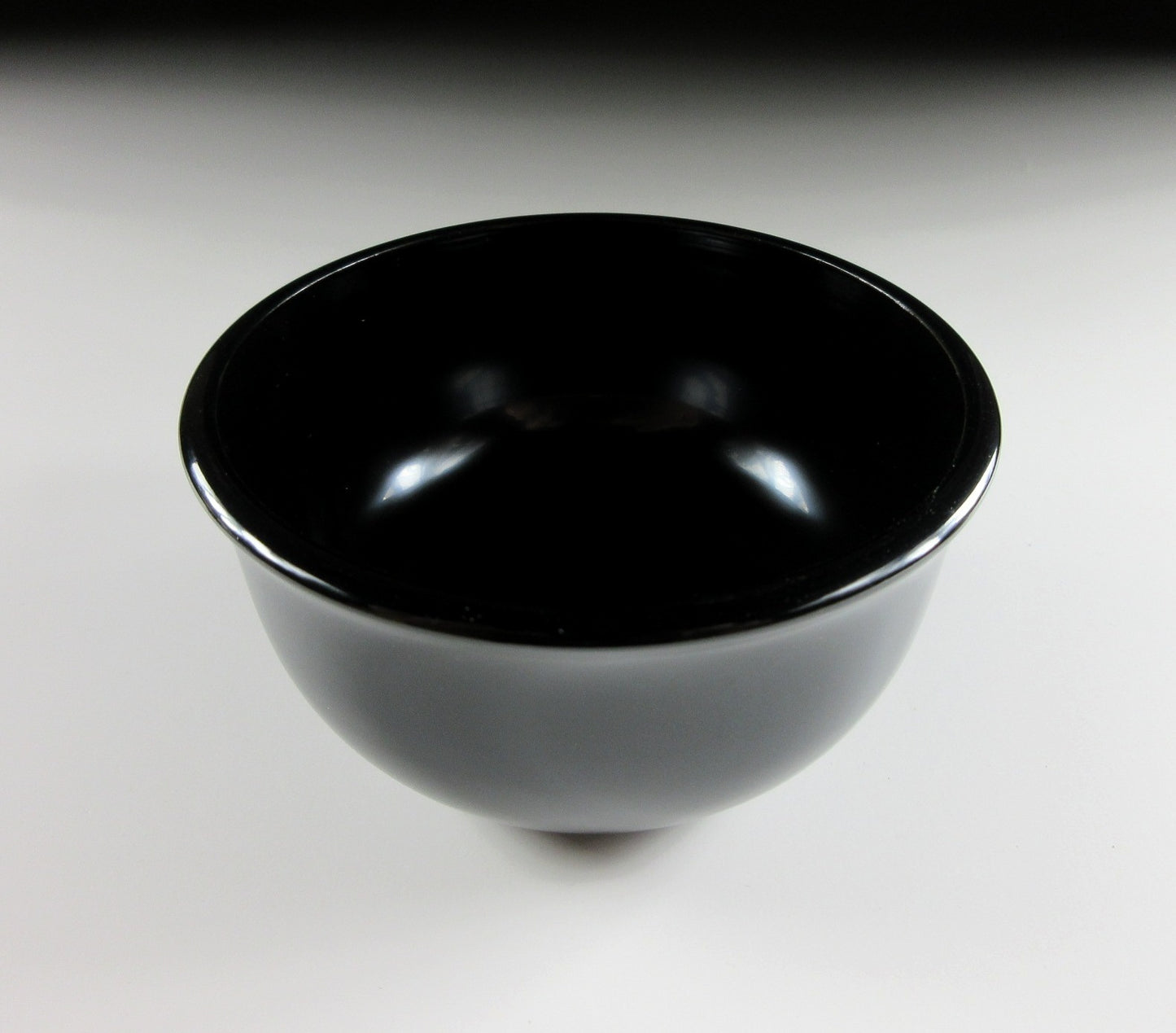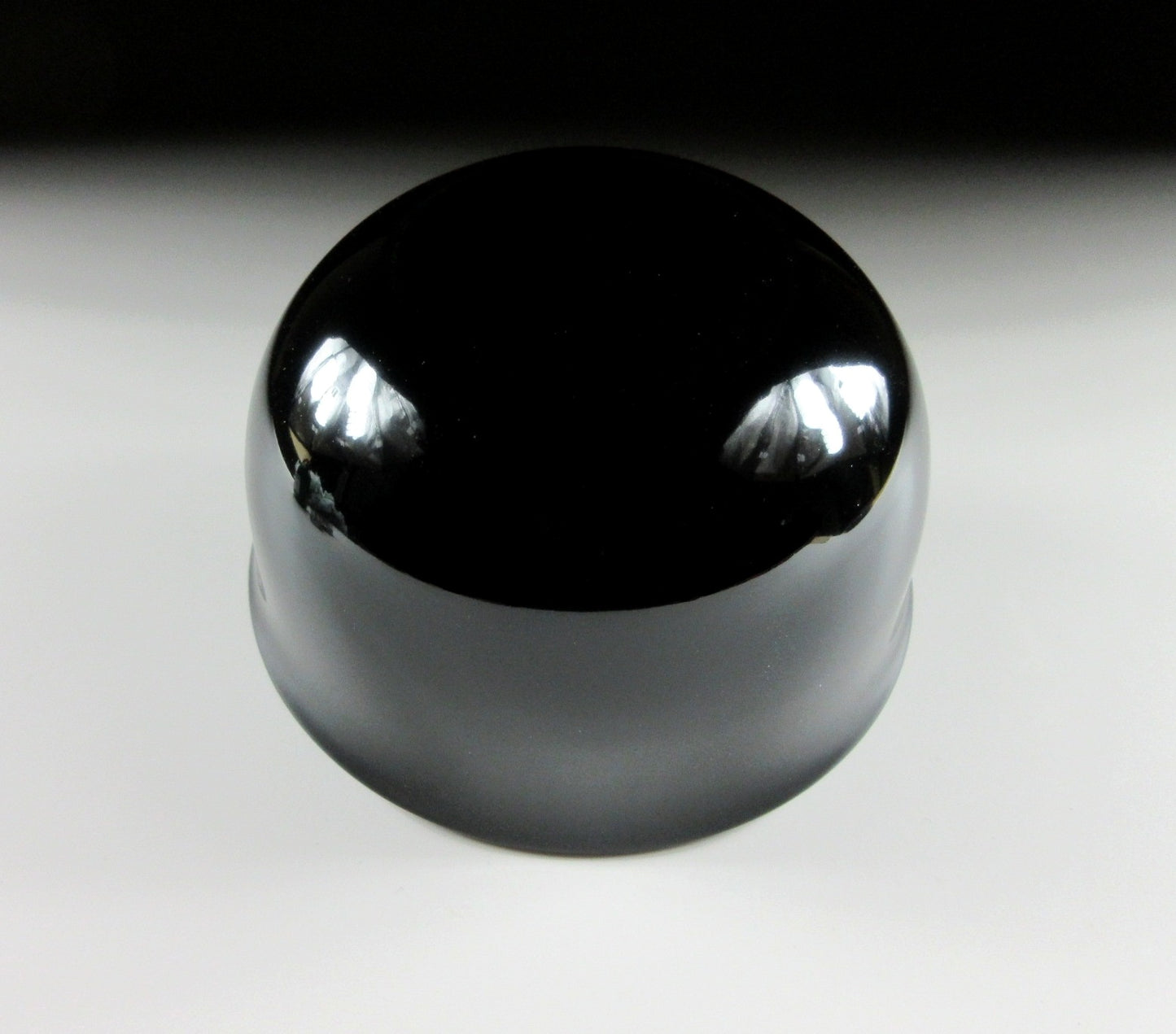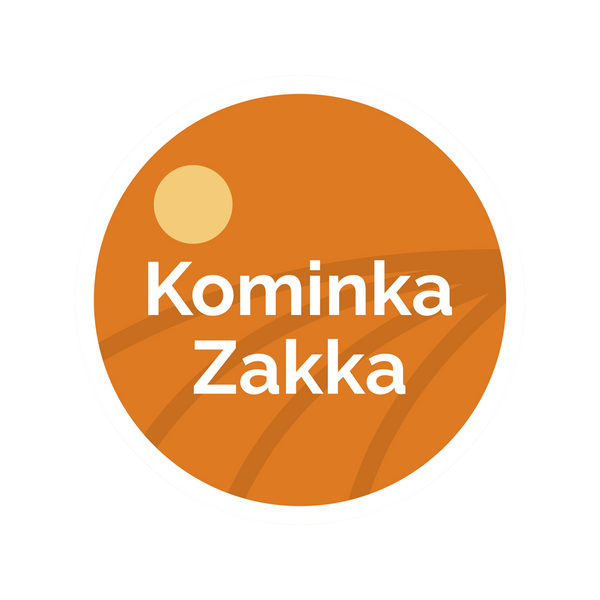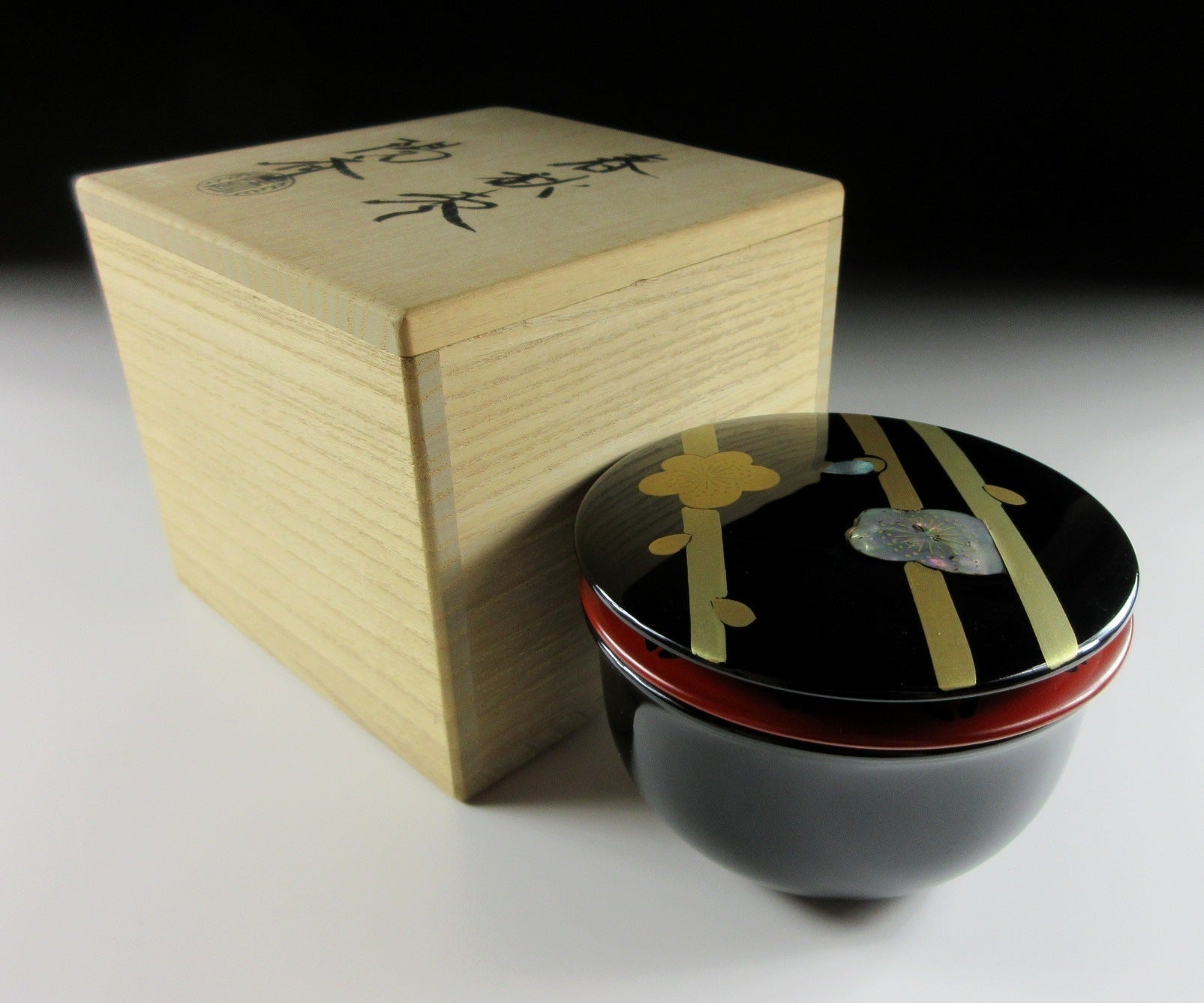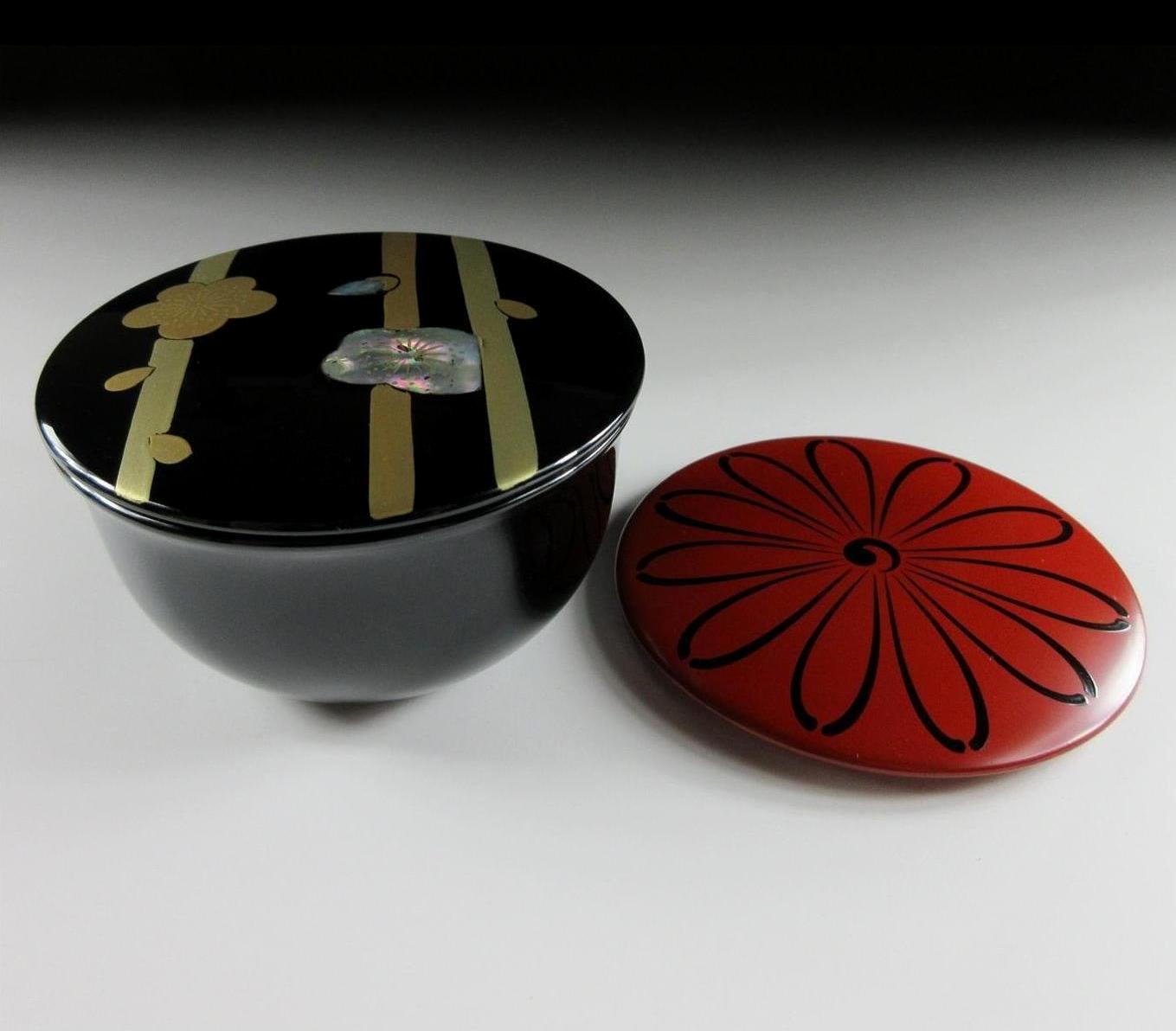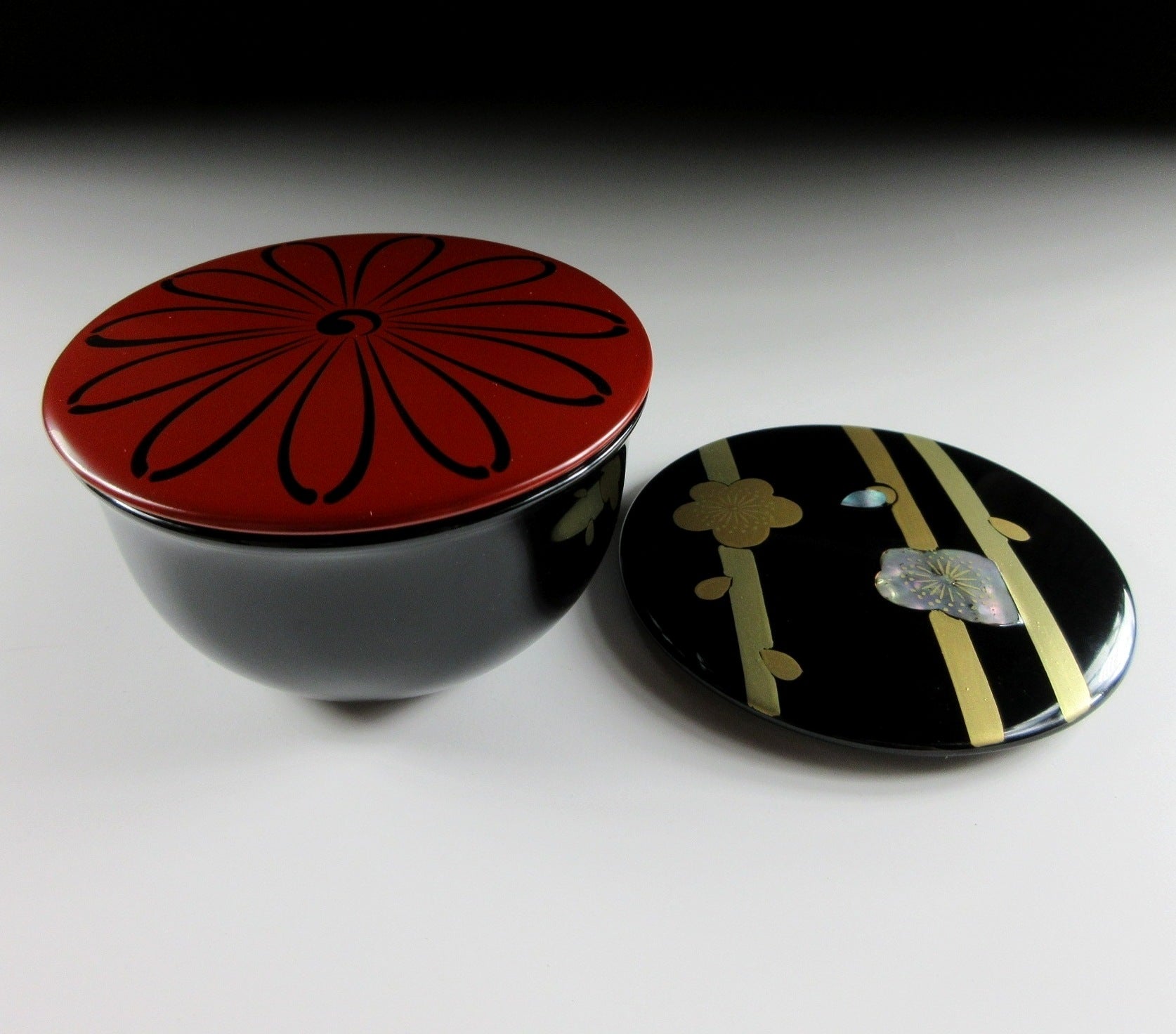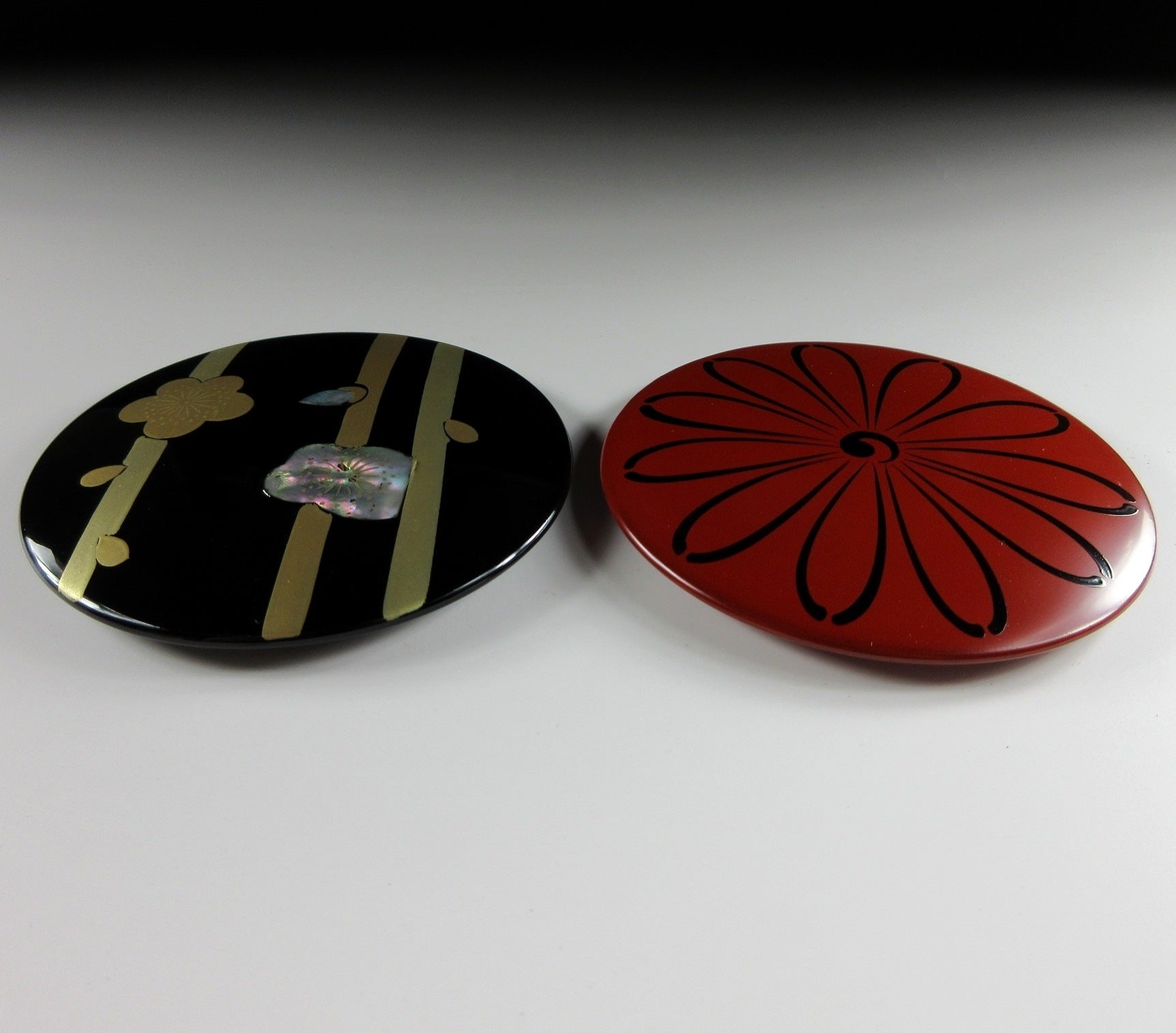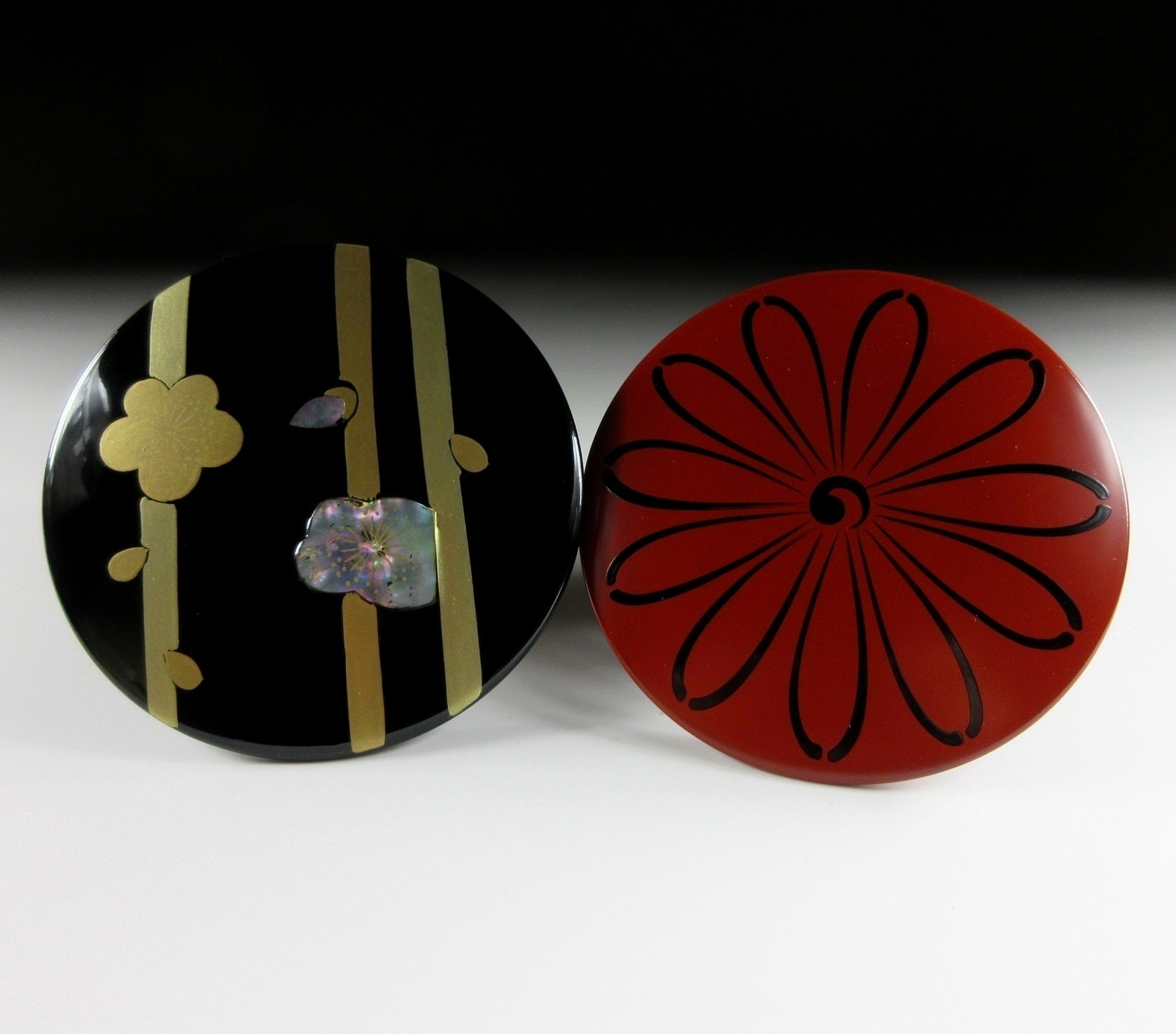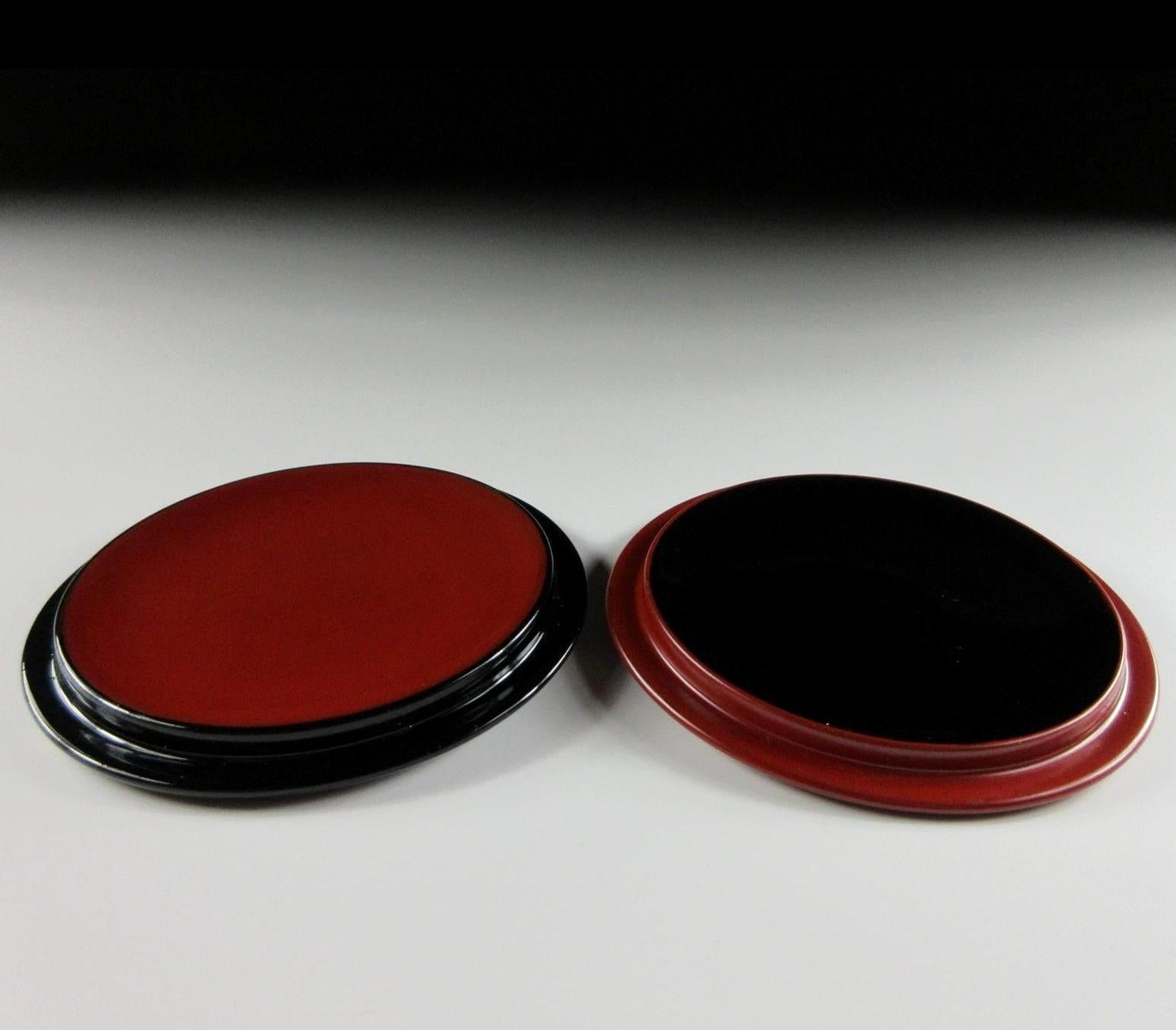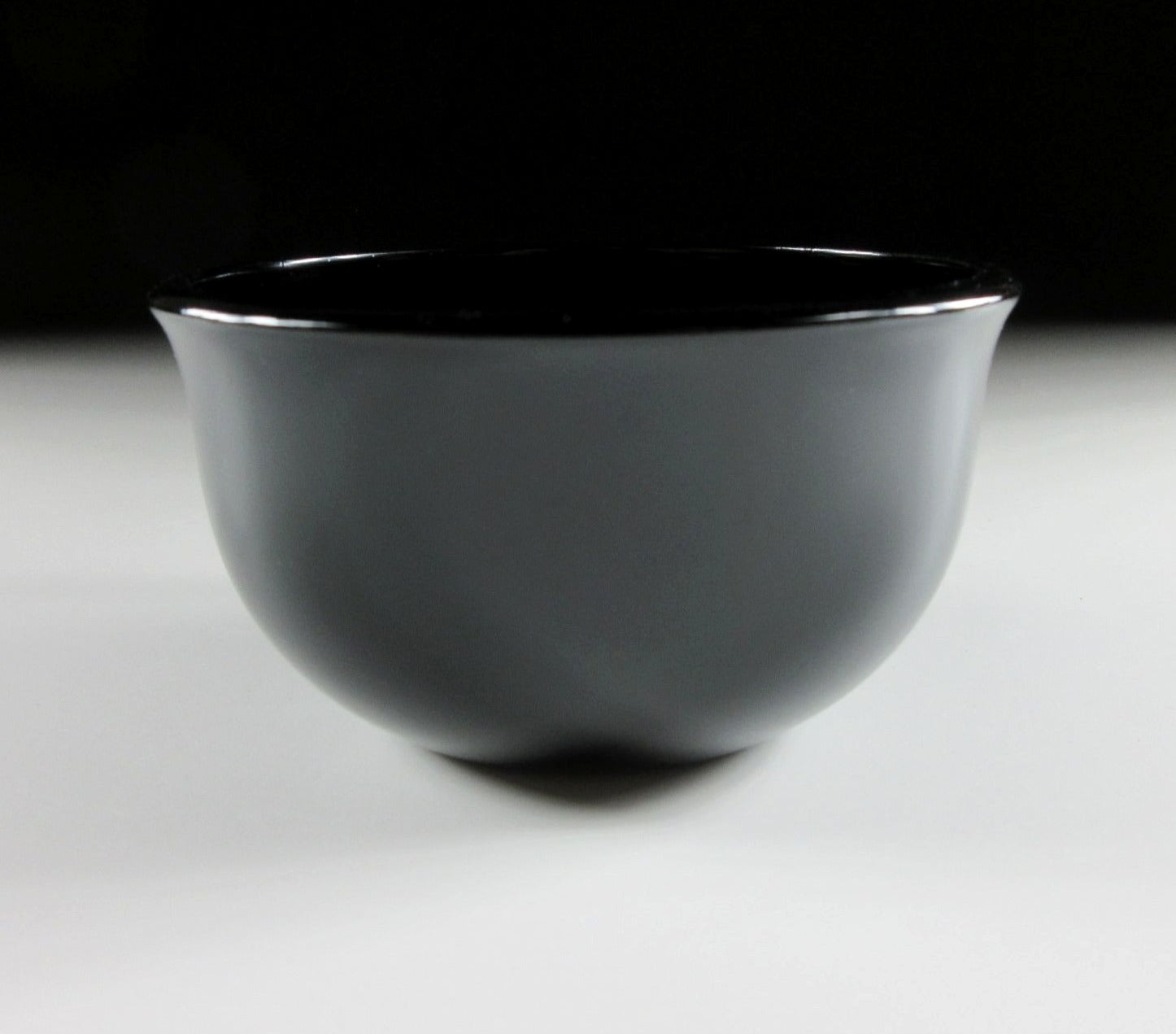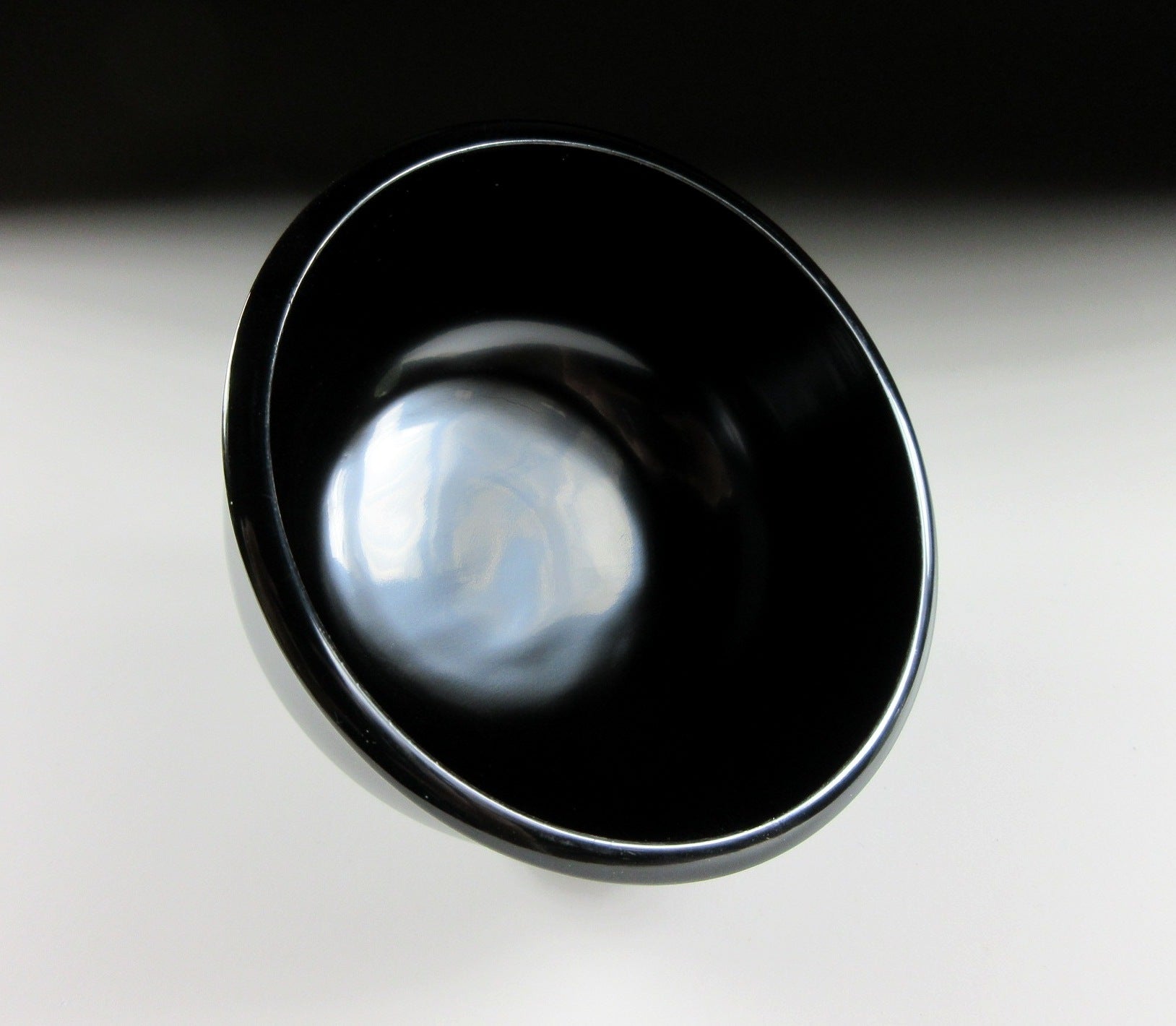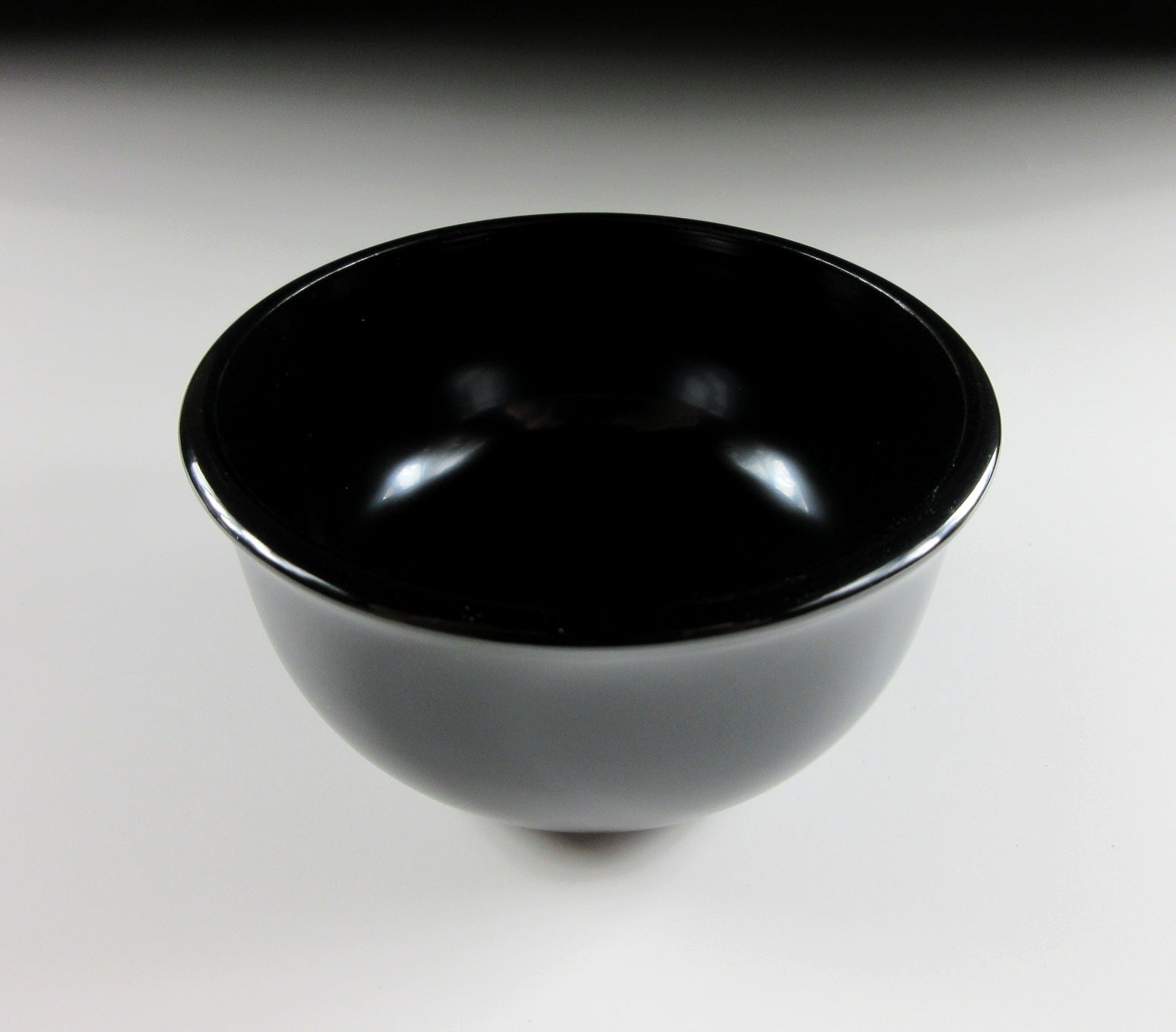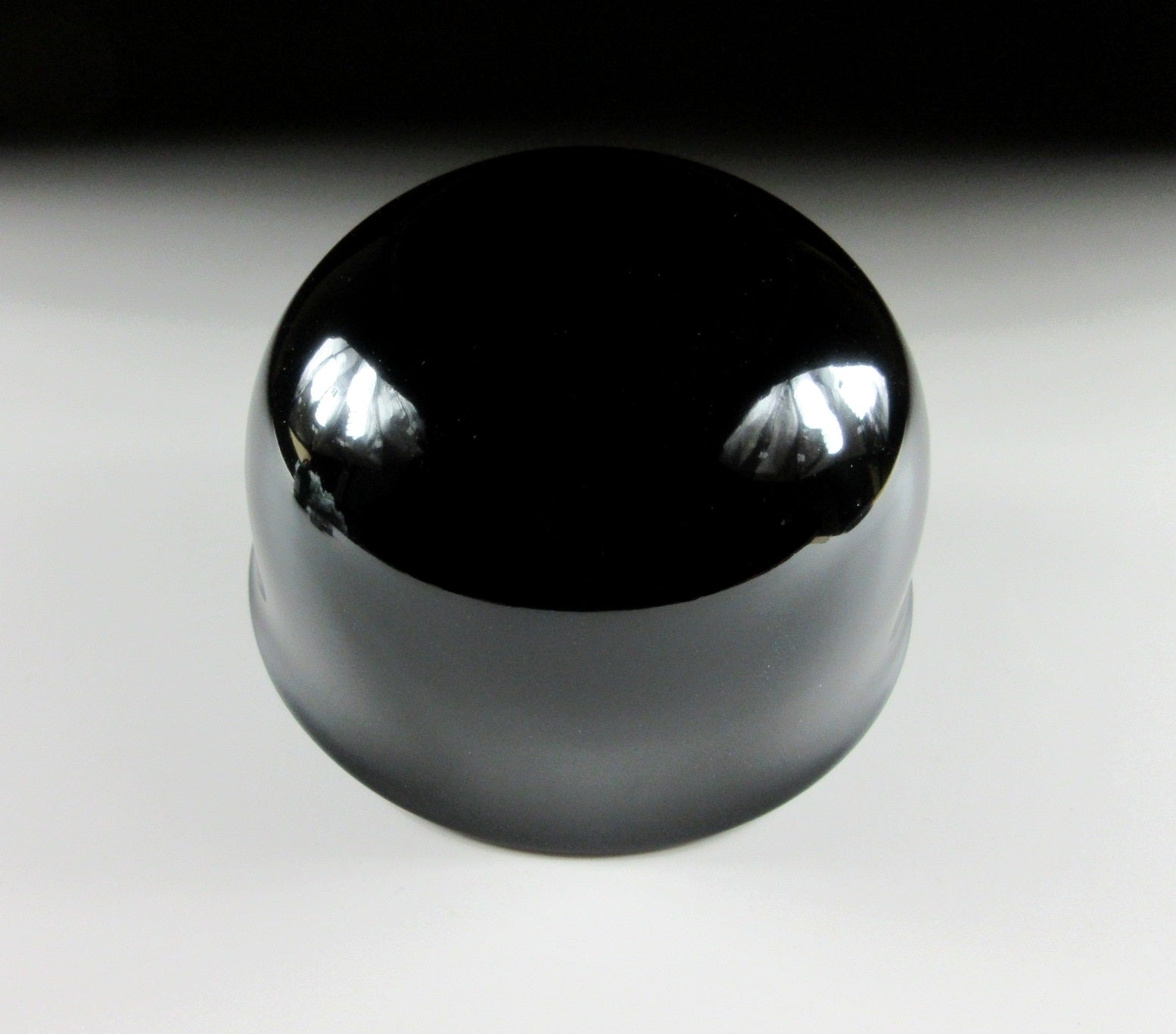Kominka Zakka
Okamoto Yosai Wajima-nuri 'Shunji' Natsume
Okamoto Yosai Wajima-nuri 'Shunji' Natsume
Couldn't load pickup availability
*SHIPPING OPTIONS VARY DEPENDING ON THE DESTINATION, PLEASE SCROLL TO THE END OF THIS LISTING FOR MORE DETAILS.
This listing is for a Wajima lacquerware ‘shunju’ spring and autumn natsume made around 20-30 years ago by Okamoto Yosai. Shunju natsume typically come with two lids – one for spring usually decorated with ume blossoms, and another for autumn featuring red lacquer with a chrysanthemum motif. The caddy in this listing is made of wood and is coated in multiple layers of black lacquer. The spring lid features gold makie and mother of pearl inlay, and the fall lid is hand-painted. It comes with its original signed wooden storage box for when it’s not in use.
Okamoto Yosai (b.1932) is a Wajima-nuri lacquer artist from Kyoto. His workshop is located in Yamanaka town in Ishikawa Prefecture, however his place of residence is actually in Kyoto city. Okamoto uses traditional techniques, and his koma-nuri pieces are very popular amongst tea enthusiasts. He is highly skilled at decorating with makie and mother-of-pearl, and he tends to produce wares decorated with flowers, cranes and other traditional motifs. Okamoto is highly respected in Ishikawa and his work is extremely popular in his hometown of Kyoto. **Fellow sellers, this information was researched by Kominka Zakka and CANNOT be used in your own listings.
Wajima nuri refers to lacquerware produced in Ishikawa Prefecture. The process of applying the lacquer is very complex, and there are as many as 124 steps involved. A finely powdered mineral called jinoko is used for the undercoating making it highly resistant and strong. Each piece has up to 8 layers of lacquer, this is the main reason why Wajima lacquerware is widely known throughout Japan for its high quality and durability. Wajima lacquerware commands high prices so purchases are usually reserved for special occasions such as weddings and anniversaries.
Makie refers to a crafting technique in Japan from presumably the Nara period. Craftsmen sprinkle gold or silver metal powder over successive layers of lacquer before it dries. Traditionally pure gold powder, pure gold flakes, and pure silver powder were used to complete motifs on lacquerware. The process of applying gold or silver powder requires both time and skill. At first the craftsman sketches out the design. He or she then adds charcoal powder to the base of the relief, and then a layer of urushi lacquer. Gold or silver powder is sprinkled over the wet lacquer, which acts as an adhesive. The surface is polished and then the process is repeated over and over until a beautiful raised pattern appears.
Sizes
Box: H.9.6cm (3.7”) x 11cm (4.3”) x 11cm (4.3”)
Natsume: H.5.2cm (2”) x Dia.8.9cm (3.5”)
Condition
It’s in very good condition with no chips or cracks.
THESE ARE SHIPPING ESTIMATES BASED ON THE CURRENT GLOBAL SITUATION
**Germany, France, Greece, Spain, Poland, Austria, Slovakia, Lithuania, Slovenia: NO SHIPPING. Very strict and expensive packaging laws in place and we are not licensed to send products to these countries. We have no plan to register at this time because the process is in some cases very expensive and complicated, plus each country has its own set of regulations and application process.
**USA, UK, Canada, Australia, New Zealand, Switzerland, Norway: Airmail Small Packet (approx. 15-28 days). Combined shipping available up to 2kgs for Airmail Small Packet (please send us a message).
**Asia: Airmail Small Packet (approx. 15-21 days). Combined shipping available up to 2kgs for Airmail Small Packet (please send us a message).
**Central Asia, Middle East, South Africa, Brazil, Mexico: EMS Express 10-15 days.
**Russia: No shipping methods available.
Share
